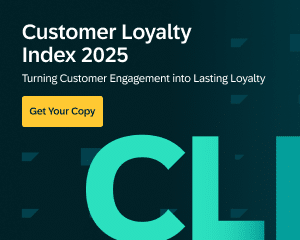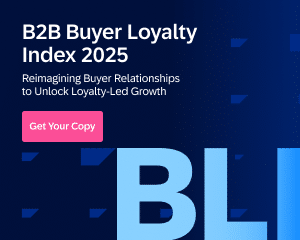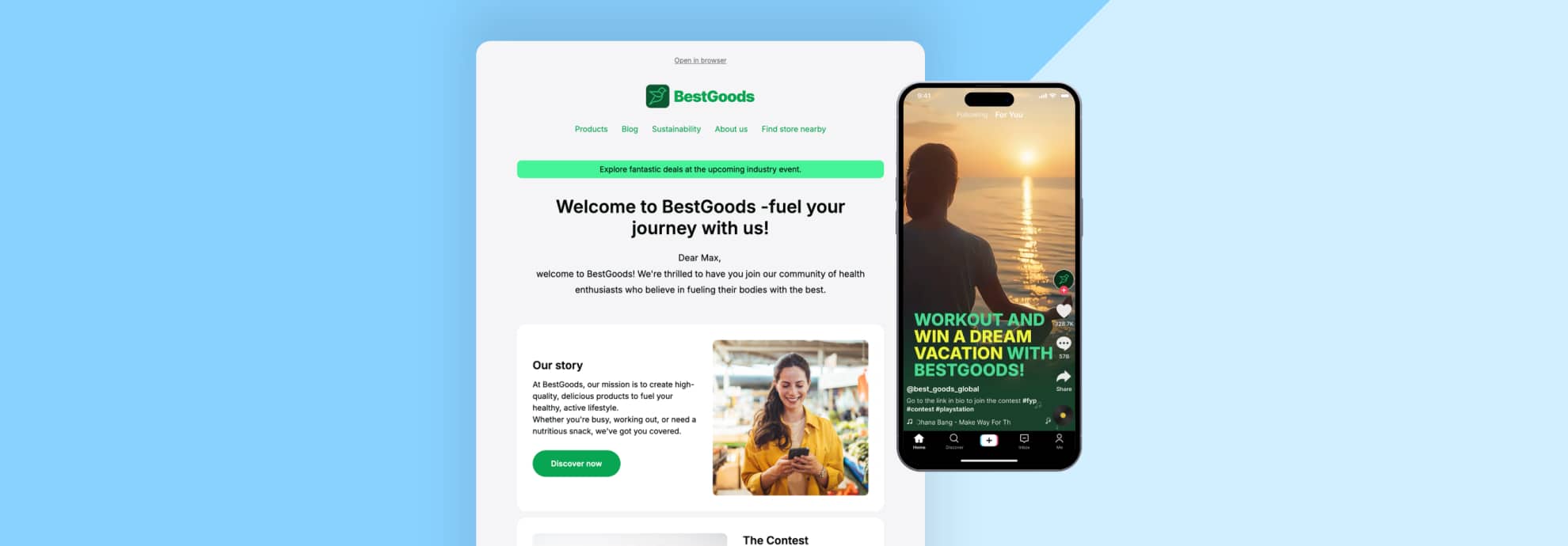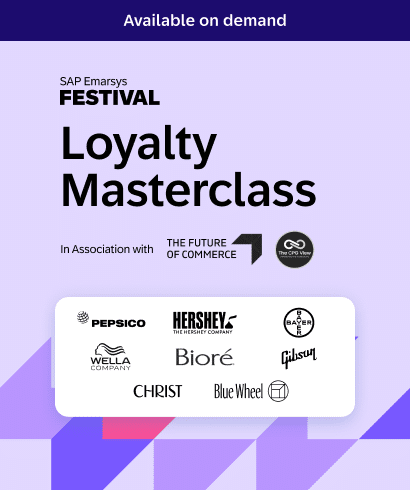I won’t beat around the bush: consumer products (CP) marketers are facing some cold, hard truths when it comes to consumer engagement and brand loyalty. The CPG Guys’ guru Peter Bond, someone I’ve known since we worked together in my years at Coca-Cola, has a great article on this. Some of the numbers:
- Younger generations are showing less brand loyalty, according to insights from The Global Consumer Products Engagement Report: 63% of Gen Z say they don’t care about “brands,” more than any previous generation.
- Omnichannel engagement has become essential, and today’s consumers expect CP brands to provide the same level of personalization they get from retail brands.
- Many CP brands are ill-equipped to provide seamless, personalized engagement in real time and at scale.
It’s not all bad news though. For every challenge marketers face, there’s also a solution. In this article, I dive into how marketers can break down silos, connect their data, and create amazing consumer experiences. I’ll also dig into a practical use case for how marketers can identify customers and grow their database.
The Barrier to Consumer Engagement: Disconnected Data
To drive engagement, brands need the ability to identify customers, track their behavior across channels, and capture their data and consent. From the very start of the consumer journey, a great deal of effort goes into growing your customer base and creating positive brand experiences.
In my role in Global Customer Advisory for Consumer Products at SAP, I’ve seen firsthand how so many CP brands, even the legendary household names, have struggled to get a complete view of their customer journey. When data is siloed, they find it challenging to view and plan cross-functionally because the different departments aren’t connected, so marketing and finance and supply and all the different areas of the company aren’t working together to create that end-to-end consumer journey.
The Global Consumer Products Engagement Report found that:
- Only 32% of all CP marketers feel they can predict future customer behaviors.
- Only 33% of CP marketers believe they can effectively segment and analyze audiences.
- More than half (56%) of CP marketers say they can’t access and use data in real time.
Disconnected data is holding CP marketers back from identifying repeat customers, understanding their behavior, and providing meaningful messages across channels.
The Secret Sauce for Consumer Engagement: Connected Data
You might wonder why we still have all these disconnects if they are taking such a toll. Anyone who has tried to stitch it all together can tell you it’s tough. If this problem were a wooden Melissa and Doug toddler puzzle, this blog post and thousands of others wouldn’t be needed. But as technology evolves, both the value of connected data and the means to achieve it are being thrown into relief. Connected data has the potential to unlock capabilities such as advanced segmentation, predictive analytics, and personalization that really stands out.
That’s also a big part of why we’ve seen a migration of CP brands as they move to SAP S/4HANA, as brand leaders recognize the importance of laying the foundation for connected data. When Bain & Company researched consumer product companies, they found that 88% were in the process of transitioning to SAP S/4HANA, and 50% were deploying advanced digital marketing tools at scale.
Your digital efforts need to be put in the context of all these different ways that you’re engaging with consumers. The objective is to harmonize and amplify what’s happening in-store (packaging, display kiosk, coupons, etc.) with digital (web, retail media, mobile wallet, social ads, etc.) so you can close the engagement loop and drive volume since so much of the purchasing in this industry happens offline.
When brands integrate their data and implement a strategy based on the customer journey, they see numerous benefits that make them more competitive and drive lasting loyalty.
1. Connect in-store and online experiences
The consumer products customer journey is uniquely complex. It’s made up of interactions between consumer and brand that occur across channels, in-store, on-premise, through traditional media, and online. A consumer’s behaviors on the web can tell you about their product preferences and purchase intentions, which can help you guide them to make purchases in-store. We’re clearly living in the Engagement Era, where omnichannel engagement between consumer and brand is the norm.
Marketers must bridge the gap between online and in-store experiences. Connected data makes this possible, enabling brands to deliver more personalized engagements, using real-time event triggers, such as a mobile web pop with a coupon for immediate in-store use.
2. Develop a unified customer profile
According to The Global Consumer Products Engagement Report, 65% of all CP marketers believe that consumer behavior is becoming harder to predict. That isn’t too surprising considering that only 39% of all CP marketers can currently tie their customer engagement data to their CX approach. But what if it didn’t have to be that way?
By connecting all your data sets (supply chain, finance, loyalty programs, referral marketing, etc.), you can build a single source of truth and a unified customer profile. A customer data platform (CDP) enables you to collect customer data in a single, central location, and using that CDP together with a customer engagement platform is a powerful combination for engagement.
“The amount of data that we’re able to extract from SAP Emarsys’ data dashboards are super helpful for us to then analyze and implement new journeys.”
When you’re able to collect data and create a unified customer profile, you can better understand your consumers and leverage that data to deliver more meaningful messages at the right time.
Of course, leveraging large quantities of consumer data at scale requires specific capabilities to be able to accomplish this sort of engagement at scale — and AI is the right tool for the job.
3. Scale personalized experiences with AI
It simply isn’t possible for human hands to craft and deliver targeted, tailored messages to a vast database of customers. Marketers must rely on AI and automation, which power real-time segmentation across channels and deliver personalized product recommendations.
Plus, generative AI increases the efficiency of marketing teams, cutting down on repetitive and time-consuming tasks, freeing marketers to focus on more creative tasks and strategies.
4. Build brand equity
In tough markets, a trap many marketers fall into is too much focus on the short term, and the debate about how to balance performance vs. brand building is still a hot topic. But it’s clear that long–term brand building creates significant value, often driving revenue over years as brand equity amortizes. Unfortunately, some CP marketers have gotten into the mindset that digital marketing is all about short-term performance. However, that approach overlooks the true potential of digital engagement. Digital channels can and should drive emotional engagement and build brand equity.
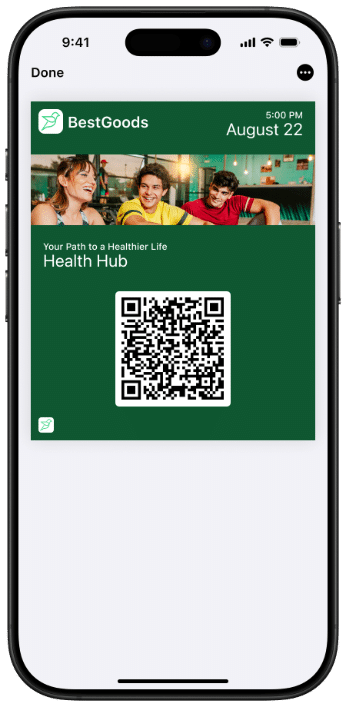
Among your loyal customers there are likely to be key individuals who are brand advocates, the people who are most likely to recommend your brand to their family, friends, and colleagues. By identifying your brand advocates and engaging them with tailored campaigns that support and reward their referral activity, you can help drive sustainable growth.
"We’re consumer-driven, so we need as much information as possible. We need to understand behaviors for the people that go into the store… and we need to understand what they want from us next.”
5. Measure results
When you look at a report based on incomplete data, you get inaccurate insights, which can lead to ineffective planning. To develop effective marketing strategies and optimize campaigns, marketers need accurate insights into customer trends, product availability, referral activity, and of course revenue, just to name a few.
Connected data empowers CP marketers with more complete insights into customer behaviors, so brands can adapt more swiftly to changes in the market. Given all of the recent socioeconomic uncertainties, most marketers are more reliant than ever on measurable results to help guide their path forward.
Use Case: Identifying Customers and Growing Your Database
There’s no question that times are tough for consumer products. We’ve seen an unprecedented level of complexity and challenges, from privacy regulations to increased advertising costs and political unrest. Not least among these concerns is consumer sentiment and spending, especially when 60% of consumers say they’ve switched to store-label alternatives to help cut back on spending, according to The Global Consumer Products Engagement Report.
For marketers to connect with consumers on a more personal level, they need to be able to identify consumers and establish an ongoing connection.
Create an omnichannel opt-in experience
Consumers know their data is valuable to marketers, and when they share their data, they expect to get something of value in return for it. They also aren’t fond of throwing lots of their personal information at marketers all at once.
By using progressive profiling tactics, marketers can engage a consumer over a series of interactions, learning more about the individual one data point at a time.
Tip: Before you begin, be sure you have a plan in place for what data is essential and what isn’t. Avoid collecting nonessential data — doing so only wastes your time, data storage, and even the consumer’s trust.
Over time, you’ll gradually build detailed customer profiles, which you can use to provide targeted product recommendations and other benefits, improving customer experience and driving loyalty.
Tip: Use different channels across the campaign, including email, digital ads, and web.
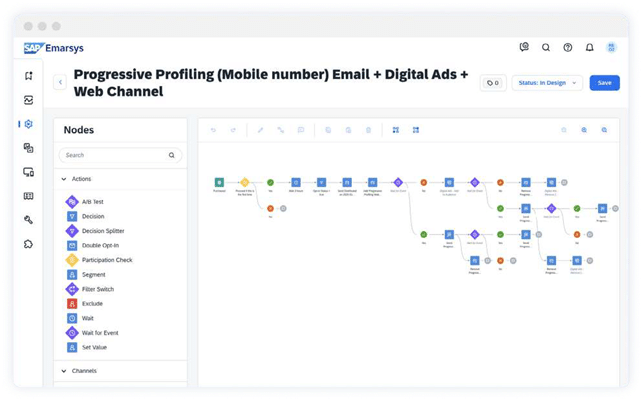
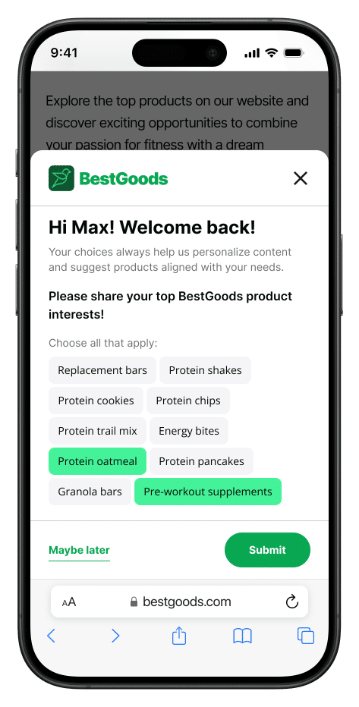
For a deeper look at progressive profiling tactics, I highly recommend this short video from Nick Odom, Principal Solutions Consultant for SAP Emarsys. He has great tips to share, especially his message about thinking ahead to the next stage, so that you always know how you’re going to use data to deliver value. The value you offer is what’s going to set your brand apart from the competition.
Drive former subscribers to resubscribe
Former customers don’t have to stay former. You can target customers in your database who have opted out or who remain unidentified.
Use a web channel form pop-up to ask customers to opt back in. Your pop-up should focus on showcasing the value the customer will receive for resubscribing.
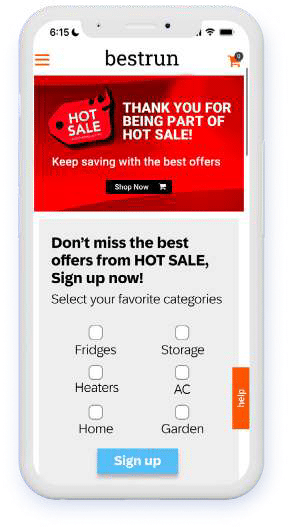
Ferrara’s story: Real example and real results
Ferrara is a leader in sweets known for fun brands such as NERDS, Jelly Belly, SweeTARTS, and many more. The candy market is extremely competitive, and Ferrara knew that to stay at the forefront of consumer snacking, they needed to modernize their legacy technologies and focus on consumer engagement.
Ferrara implemented an SAP HANA database and SAP Analytics, integrating consumer, retail, and supply chain insights, and they began developing unified customer profiles. Using SAP Emarsys together with the SAP suite, they’ve been able to identify characteristics about their consumers and use that insight to convert casual customers into true brand fans.
As a result of their efforts, Ferrara achieved 59% increase in contactable customers.
Check out Ferrara’s complete success story.
“The lion’s share of the work is currently being done using SAP Emarsys. But when it comes to insights, analytics, media efficiency, and consumer engagement, SAP Customer Data Platform is where we can really start to enrich consumer data from different sources, build audiences, and ingest anonymized data from other platforms and then target consumers who are brand fans.”
Final Thoughts
One more tip before you go: when it comes to identifying the customers who are engaging with you on digital channels, you don’t have to start building campaigns from scratch. SAP Emarsys partners with consumer products brands to solve for uses cases like database growth and many more. Emarsys also provides pre-built tactics for omnichannel engagement, so CP marketers can leverage their data to drive more engagement, faster.
Be sure to catch my webinar on Loyalty at Scale (available on-demand) for consumer engagement, where you’ll get a deep-dive into how SAP Emarsys helps CP brands connect data across channels to deliver real results. This session is packed with more great strategies and use cases for CP!
Handpicked Related Content:
